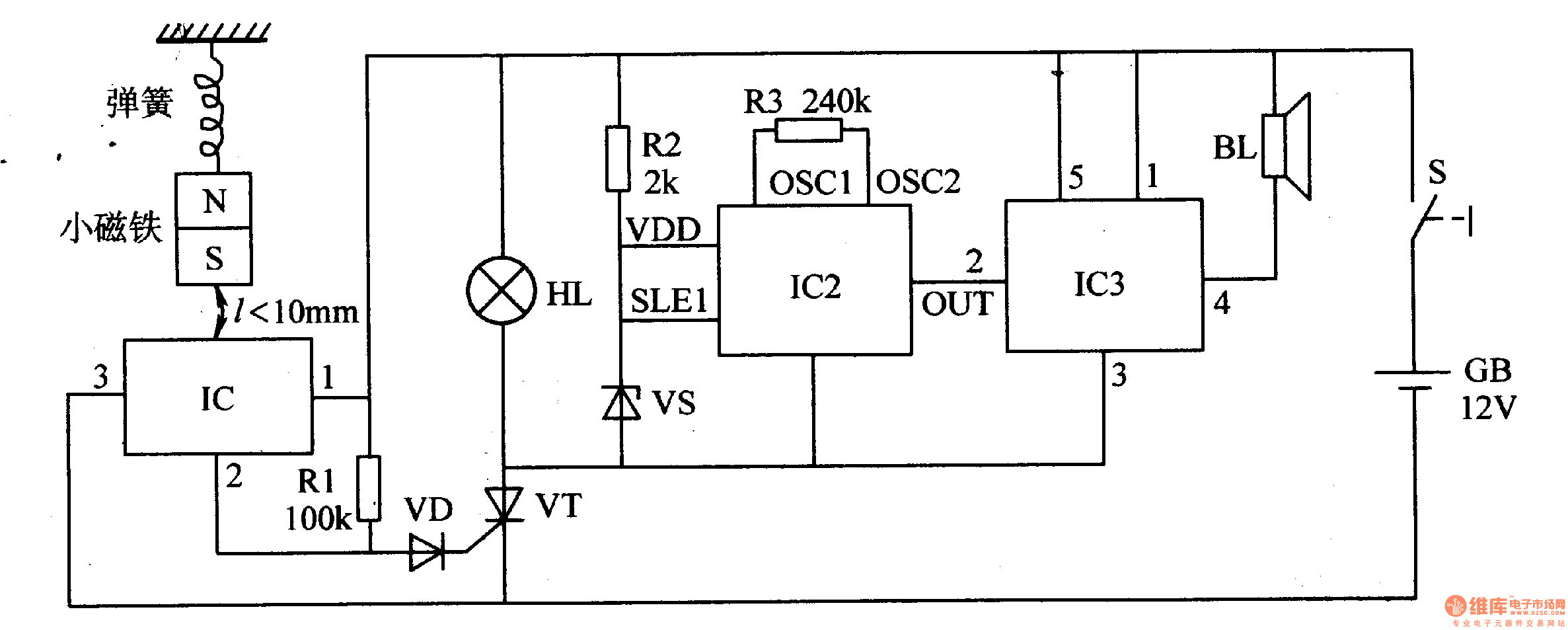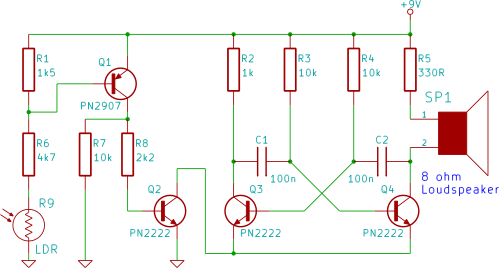
Fire Alarm with LDR Sensor

This is a fire alarm circuit that utilizes a Light Dependent Resistor (LDR) to detect smoke from a fire, making it effective for identifying dark smoke. The risk of fire accidents increases during the summer season, and such incidents could potentially be mitigated with this technology.
The fire alarm circuit primarily consists of an LDR, which is a type of resistor that changes its resistance based on the intensity of light it receives. In the presence of smoke, which typically absorbs light, the resistance of the LDR increases, causing a change in voltage across the circuit. This voltage change can be monitored using a microcontroller or an operational amplifier, which can be configured to trigger an alarm when the smoke level exceeds a predefined threshold.
The circuit may include additional components such as a comparator to assess the voltage level from the LDR and a relay module to activate an external alarm or notification system. A power supply, usually a battery or a regulated DC source, is necessary to power the circuit.
For enhanced reliability, the circuit can be designed with a hysteresis feature to prevent false alarms due to transient changes in light levels. This can be achieved by incorporating feedback from the output of the comparator back to its input, ensuring that the alarm only activates under sustained conditions of smoke detection.
Furthermore, the integration of a buzzer or a LED indicator can provide immediate visual and auditory alerts to occupants in the vicinity, enhancing the safety measures in place. The design may also consider environmental factors, such as temperature and humidity, which can affect the performance of the LDR and overall circuit functionality.
In summary, this fire alarm circuit serves as a crucial safety device capable of detecting smoke through the use of an LDR, providing a timely warning to prevent fire-related accidents, particularly during high-risk seasons.This is the fire alarm circuit which use LDR to sense the smoke from the fire, so it can be used to detect any dark smoke. With the onset of summer season, possibilities of fire accidents go up. These fire accidents could be prevented if ti.. 🔗 External reference
The fire alarm circuit primarily consists of an LDR, which is a type of resistor that changes its resistance based on the intensity of light it receives. In the presence of smoke, which typically absorbs light, the resistance of the LDR increases, causing a change in voltage across the circuit. This voltage change can be monitored using a microcontroller or an operational amplifier, which can be configured to trigger an alarm when the smoke level exceeds a predefined threshold.
The circuit may include additional components such as a comparator to assess the voltage level from the LDR and a relay module to activate an external alarm or notification system. A power supply, usually a battery or a regulated DC source, is necessary to power the circuit.
For enhanced reliability, the circuit can be designed with a hysteresis feature to prevent false alarms due to transient changes in light levels. This can be achieved by incorporating feedback from the output of the comparator back to its input, ensuring that the alarm only activates under sustained conditions of smoke detection.
Furthermore, the integration of a buzzer or a LED indicator can provide immediate visual and auditory alerts to occupants in the vicinity, enhancing the safety measures in place. The design may also consider environmental factors, such as temperature and humidity, which can affect the performance of the LDR and overall circuit functionality.
In summary, this fire alarm circuit serves as a crucial safety device capable of detecting smoke through the use of an LDR, providing a timely warning to prevent fire-related accidents, particularly during high-risk seasons.This is the fire alarm circuit which use LDR to sense the smoke from the fire, so it can be used to detect any dark smoke. With the onset of summer season, possibilities of fire accidents go up. These fire accidents could be prevented if ti.. 🔗 External reference





